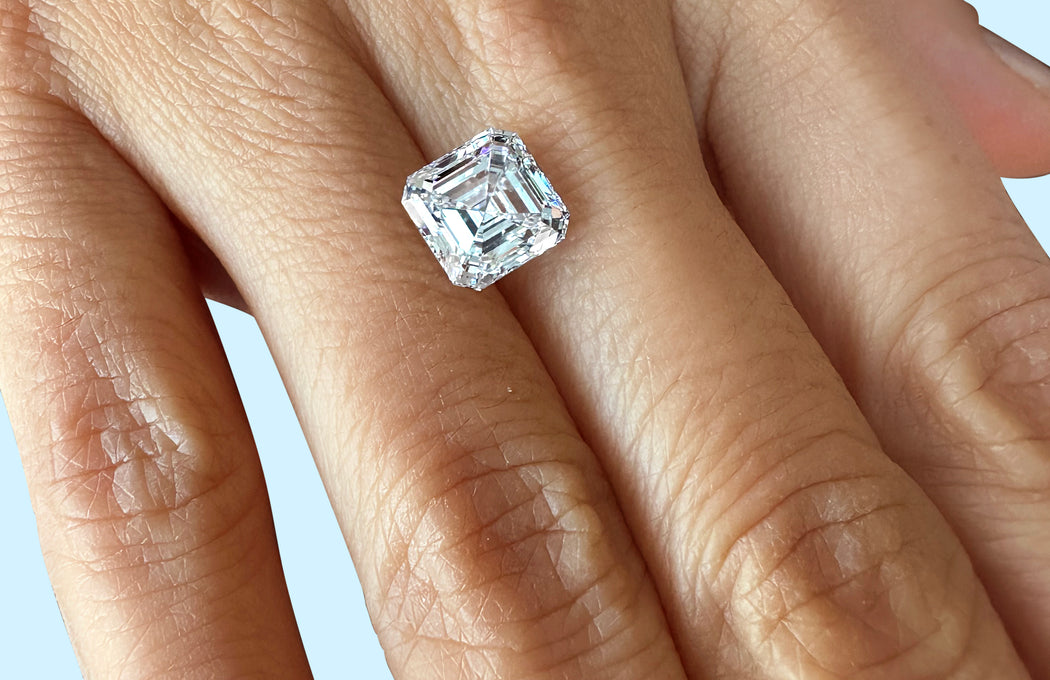
Lab-made diamonds have gained immense popularity in recent years due to their ethical production and affordability. Among the different processes used to create lab-made diamonds, HPHT vs CVD remains a key discussion. These two methods, High-Pressure High-Temperature (HPHT) and Chemical Vapor Deposition (CVD), each have their own advantages and characteristics. Understanding the differences between HPHT vs CVD can help buyers make an informed decision when purchasing lab-made diamonds.
Table of Contents
What Are Lab-Made Diamonds?
Lab-made diamonds are created in controlled environments using advanced technological processes that replicate the natural formation of diamonds. When discussing HPHT vs CVD, it is important to understand that both methods produce genuine diamonds with identical chemical and physical properties to natural diamonds. The primary difference lies in their creation process, which influences their quality, appearance, and cost.
The HPHT Method of Producing Lab-Made Diamonds
HPHT vs CVD is a crucial topic in the diamond industry, and HPHT diamonds are one of the oldest methods of synthetic diamond production. The HPHT process involves subjecting carbon to extreme heat and pressure, similar to how diamonds naturally form beneath the Earth’s surface. Lab-made diamonds created through HPHT often have a yellowish tint due to nitrogen contamination, but advancements in technology have made it possible to produce high-quality colorless diamonds as well. Buyers interested in HPHT vs CVD should consider that HPHT diamonds are often used to enhance the color of existing diamonds and can sometimes be more affordable.
The CVD Method of Producing Lab-Made Diamonds
When analyzing HPHT vs CVD, the CVD method stands out as a more modern and advanced approach. Lab-made diamonds produced through CVD are created using a low-pressure chamber where carbon-rich gases break down and deposit carbon atoms onto a diamond seed. This process results in high-purity diamonds with fewer impurities compared to HPHT. Many consumers prefer CVD diamonds because they often exhibit better clarity and are usually free from metallic inclusions. The debate of HPHT vs CVD continues as technology evolves, making CVD an increasingly popular choice among diamond buyers.
HPHT vs CVD: Key Differences in Appearance
Lab-made diamonds can be difficult to distinguish from natural diamonds, but there are subtle differences when comparing HPHT vs CVD. HPHT diamonds may have a slight yellow or brown tint due to nitrogen incorporation during formation, while CVD diamonds tend to be purer and more colorless. However, some lab-made diamonds undergo post-growth treatments to enhance their color, making HPHT vs CVD distinctions even more challenging. Buyers looking for high-quality lab-made diamonds often prefer CVD for its superior clarity and whiter appearance.
Durability and Hardness of HPHT vs CVD Diamonds
One of the most important factors when choosing between HPHT vs CVD is the durability of lab-made diamonds. Both HPHT and CVD diamonds rank 10 on the Mohs scale of hardness, making them equally strong and suitable for daily wear. However, HPHT diamonds may contain more metallic inclusions, which can slightly affect their structural integrity. CVD diamonds, on the other hand, are known for their high purity and lack of metal inclusions, making them a preferred option for those seeking the most durable lab-made diamonds.
Price Comparison of HPHT vs CVD Diamonds
Price is another critical aspect when comparing HPHT vs CVD lab-made diamonds. Since the HPHT process has been around for a longer time, it is generally more cost-effective and produces diamonds at a lower price point. However, the additional treatment needed to improve their color and clarity can sometimes make HPHT diamonds more expensive. On the other hand, CVD diamonds are often slightly more expensive initially due to their advanced production process, but their higher purity and better appearance justify the cost. When choosing between HPHT vs CVD, buyers should consider their budget and preference for quality.
Environmental and Ethical Considerations
One of the biggest reasons consumers opt for lab-made diamonds is their ethical and environmental benefits. When discussing HPHT vs CVD, both processes are far more sustainable than traditional diamond mining. However, CVD diamonds have a lower environmental impact because they require less energy and do not involve high-pressure conditions. HPHT diamonds, on the other hand, consume more energy due to the need for extreme temperatures and pressure. For eco-conscious buyers, understanding the environmental implications of HPHT vs CVD is crucial in making a responsible choice.
Which Lab-Made Diamond Should You Choose?
The debate between HPHT vs CVD continues as both processes evolve and improve. lab made diamonds from both methods offer excellent alternatives to natural diamonds, providing the same brilliance and durability without the ethical concerns of traditional mining. If purity, color, and clarity are top priorities, CVD diamonds may be the better choice. However, if affordability and availability are more important, HPHT diamonds offer a great option. Understanding the key differences in HPHT vs CVD will help buyers select the best lab-made diamonds to suit their needs.
Conclusion
When comparing HPHT vs CVD, it is evident that both methods have their unique advantages and drawbacks. Lab-made diamonds provide a sustainable, ethical, and affordable option for consumers looking for high-quality diamonds. HPHT vs CVD is a crucial topic in the jewelry industry, and understanding these differences will help buyers make an informed decision. Whether choosing HPHT or CVD, lab-made diamonds continue to revolutionize the diamond market, offering stunning brilliance with minimal environmental impact.






